
As the name implies, adverse yaw is an adverse or unfavorable condition that, among other things, delays achieving solo abilities. Traditionally, until his or her skills improve, struggling and committing to many hours of practice before soloing has been the assumed burden of a student pilot. Unknowingly and unnecessarily, novices have been fighting the additional challenge of flying with adverse yaw. Indeed, novice pilots have always assumed the lack of correlation between their control inputs/intentions and the response of the plane to be due to wind (or the need for more practice), when in fact adverse yaw has been a big factor!
This article details the practice of using aileron/rudder transmitter mixing to eliminate adverse yaw, i.e., the inherent opposite yaw or skid that is especially pronounced during aileron deflections on fl at-bottom-wing aircraft, such as those used for primary flight training. It’s probably safe to say that most of the people reading this learned to fly at the side of a recreational flier/instructor with little preflight preparation. As a result, most pilots are conditioned to “react” to what the airplane does, as opposed to having a plan and pro-actively controlling the plane. Consequently, most pilots naturally think that getting better at making corrections, having good reflexes, and experiencing more stick time are the keys to becoming a better flier. Rarely does adverse yaw or the advantages of aileron/rudder mixing when learning to fly ever come up. However, if you were to objectively compare the results achieved when training with aileron/rudder mixing versus without, you would discover an immediate improvement inconsistency and the rate of learning.
ADVERSE YAW
Esta historia es de la edición February 2021 de Model Airplane News.
Comience su prueba gratuita de Magzter GOLD de 7 días para acceder a miles de historias premium seleccionadas y a más de 9,000 revistas y periódicos.
Ya eres suscriptor ? Conectar
Esta historia es de la edición February 2021 de Model Airplane News.
Comience su prueba gratuita de Magzter GOLD de 7 días para acceder a miles de historias premium seleccionadas y a más de 9,000 revistas y periódicos.
Ya eres suscriptor? Conectar
Legend Hobby / Seagull Models - Cessna Grand Caravan 208
The Cessna Grand Caravan 208 is a legend in aviation circles. A single engine utility aircraft that punches up with capabilities that rival many twin engine aircraft in its class. Its seemingly simple configuration belies its near extreme utility.
PROPER CG LOCATION FOR AEROBATICS
If you are getting into aerobatics and are starting to perform more advanced maneuvers, it is time to discuss ways you can not only become a better pilot, but how you can also improve the flight characteristics of your airplanes.
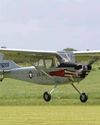
Legend Hobby 13-Foot L-19 Bird Dog/ Cessna O-1
This famous multi-mission single engine observation aircraft served from 1950-1974. From calling out target locations to providing intel/recon information, the Bird Dog was a valued asset in both the Korean War and Vietnam.
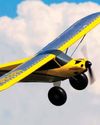
EARN YOUR WINGS
10 Tips for First-Flight Success
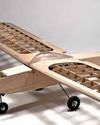
Old School Model Works Fifty Six
The Fifty Six takes its design cues from the original .09- to .15-size Carl Goldberg Falcon 56 of the 1960s. Reworked to incorporate modern, lasercut techniques to make kit building better than ever.
FLYING TWINS Multi-engine warbirds made easy
Let’s face it, there’s just something extra special about twin-engine RC aircraft. Most modelers stop what they’re doing when a twin fires up on the flightline.
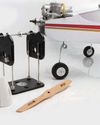
HOW TO BALANCE PROPELLERS
Four easy steps to increase performance and reduce vibration
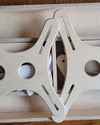
PRODUCT REVIEW: RC PLANE STANDS BENCHTOP MODEL
I’m a sucker for shop stuff. I buy tools I will probably never use just because they are cool, or I might need to use them someday. When Glen from RC Plane Stands reached out about a review, however, I knew as soon as I browsed their website that I would be receiving something I would use a lot, maybe even daily.
SPIRIT OF RHINEBECK AWARD WINNER
A close up of Norman Malinowski’s 1/3-scale Albatros
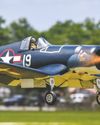
CENTER OF GRAVITY BASICS
The secret to a plane that flies well